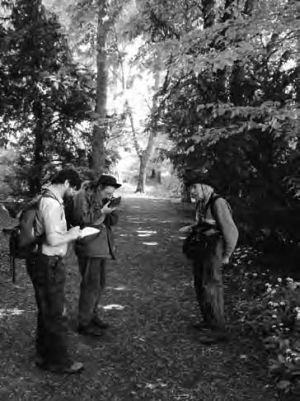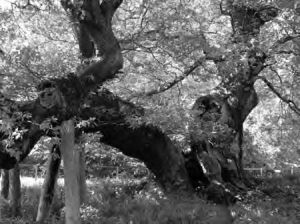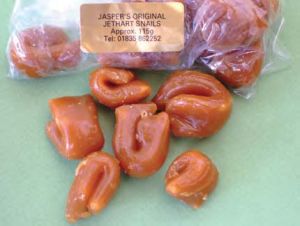|
On Saturday 3rd June a small but enthusiastic group met at the Harestanes Visitor Centre to improve our knowledge of the slugs and snails of the surrounding parts of the Borders, particularly ancient woodlands. In spite of advertising this as a joint meeting with the Scottish Borders Biological Records Centre (SBBRC), we only managed to attract one SBBRC member, Jon Mercer, who runs the Centre and more than made up for the lack of numbers with his enthusiasm. The Visitor Centre was to be our base for the next two days, and as well as being able to use its award-winning café, Jon Mercer had arranged for a room to be available with microscopes to help determine specimens that we couldn’t identify in the field. In spite of the weather being rather dry – in fact it was warm and sunny for the whole weekend – we had a very successful series of outings, finding well over 40 species, of which many were new records for their respective areas (Table 1). It was indicative of the poor coverage in this area that many of the new records were of relatively common species, although we did have some rarities as well. Our first morning was spent around Harestanes, mostly in the woods (Fig. 1), where we found some 30 species, of which a third were new to that 10 km square. The woodlands were rather dry, but nevertheless productive, but a stream running along one edge provided a damper habitat. This stream was dammed to make a small pond, which yielded some freshwater species. Further upstream we found the tiny snail Columella edentula, which was quite common on ferns in the deep damp ravine by the stream. We also found the spiny-shelled Prickly Snail Acanthinula aculeata. A large pale Arion was kindly identified by Roy Anderson as being most probably a young A. rufus (Fig. 2). Back at the Visitor Centre we explored the wildlife pond and found various water snails, including some specimens of putative Physella sp. which had more pointed shells than the native Common Bladder Snail Physa fontinalis, and which might therefore have been an introduced species. However, expert dissection is needed to separate Physella spp., and at the time of writing this has not yet been done. In the afternoon we moved to the south of Jedburgh and explored various steep ancient woodlands sloping down to the Jed Water. The first site we looked at, opposite the historic Capon Tree (Fig. 3), proved to be rather dry and not very rewarding, but another wood seemed more promising (Fig. 4). Access was a bit difficult in places, and although we found a good number of species, the typical ancient woodland species that we were hoping for eluded us. However, we did find the hairy-shelled Silky Snail Ashfordia granulata, almost a British endemic. On the Sunday morning we visited more ancient woodland, next to Ancrum old churchyard, and again got a good list of species – 27. With the ground covered with Dog’s Mercury and Woodruff, both ancient woodland indicators, we had high hopes and were not disappointed. We were excited to discover the Brown Snail Zenobiella subrufescens, a characteristic species of old broad-leaved woodland, which has a soft and rather flexible shell. Another species of interest here was the worm-like slug Boettgerilla pallens. This is an Eastern European species, first found in Britain in 1972, but which has now spread widely. There are still very few records of it from the Borders, however. Fortunately it seems to be quite a benign species. The churchyard and its surrounding walls also yielded several snails, and the adjacent Ale Water (Fig. 5) provided some freshwater species, while the dense growth of butterbur on its banks was rich in Cepaea, Arianta and other snails. Our final session was at the Newton St Boswell’s Woods SSSI, where we again got nearly 30 species, including the highlight of the whole weekend. This was the minute Wry-necked Whorl Snail Vertigo pusilla, which was a new vice-county record – indeed, there are only a handful of records for the whole of Scotland. We are very grateful to Barry Colville for confirming our identification. We were also intrigued by the Succineids which were common here; were they Oxyloma elegans, or could they have been Succinea putris, which would be on the edge of its range here but might be spreading northwards? Again, we await a definitive determination of our specimens by an expert. Less welcome discoveries were the Budapest Slug Tandonia budapestensis and Caruana’s Slug Deroceras panormitanum, a couple of introduced species that are often pests, and which are no doubt spreading through the Borders. As we had found by the Ale Water, there were freshwater species in the Tweed, which flows past the woods, and again we found plenty Cepaea and Arianta on the butterbur on its banks. Although our main aim was to sample the woodland fauna, we were nevertheless pleased to find an urban species that is still present in Jedburgh. This is the Jethart snail, Limax jedburgensis*, which is much esteemed as a delicacy by local people. It is so rare and local that it does not appear in any of the identification guides we are aware of. In spite of this, it still seems to be flourishing at several sites in the town (Fig. 6). Altogether it was a most profitable weekend, and it seems likely that excursions to other similar areas in the Borders would prove equally successful. Finally, our warmest thanks are due to Jon Mercer, not only for making facilities available at Harestanes, but also for advising on good places to visit. Footnote * Note that in Scotland the term snail is often use to refer to a slug. |
|
CSGBI/SBBRC Joint meeting, 3–4/6/2006 Table 1
| Harestanes | Jed Water | Ancrum | Newton St Boswells | |
| Potamopyrgus antipodarum | + | + | + | |
| Physa fontinalis | + | |||
| ?Physella sp. | + | |||
| Galba truncatula | + | |||
| Radix balthica | + | + | + | |
| Ancylus fluviatilis | + | + | ||
| Carychium tridentatum | + | + | ||
| ?Succinea/Oxyloma sp. | + | + | ||
| Cochlicopa lubrica | + | + | ||
| Cochlicopa lubricella | + | |||
| Columella edentula | + | |||
| Vertigo pusilla | + | |||
| Lauria cylindracea | + | + | + | |
| Acanthinula aculeata | + | + | ||
| Discus rotundatus | + | + | + | |
| Arion ater agg. | + | + | ||
| Arion ater seg. | + | + | ||
| Arion ?rufus | + | |||
| Arion subfuscus | + | + | + | + |
| Arion circumscriptus seg. | + | + | + | |
| Arion silvaticus | + | |||
| Arion fasciatus | + | |||
| Arion distinctus | + | + | + | |
| Vitrina pellucida | + | + | ||
| Vitrea crystallina | + | + | + | |
| Aegopinella pura | + | |||
| Aegopinella nitidula | + | + | + | |
| Nesovitrea hammonis | + | |||
| Oxychilus cellarius | + | + | + | + |
| Oxychilus alliarius | + | + | + | |
| Tandonia budapestensis | + | |||
| Boettgerilla pallens | + | |||
| Limax maximus | + | + | + | |
| Lehmannia marginata | + | + | ||
| Deroceras laeve | + | + | ||
| Deroceras reticulatum | + | + | + | |
| Deroceras panormitanum | + | + | ||
| Euconulus fulvus seg. | + | + | ||
| Clausilia bidentata | + | + | + | + |
| Ashfordia granulata | + | + | + | |
| Zenobiella subrufescens | + | + | ||
| Trochulus striolatus | + | + | + | |
| Arianta arbustorum | + | + | + | |
| Cepaea nemoralis | + | + | ||
| Cepaea hortensis | + | + | + | |
| Pisidium sp. | + |

 Fig. 1. Conchologists in the woods at Harestanes, Roxburghshire (Adrian T. Sumner).
Fig. 1. Conchologists in the woods at Harestanes, Roxburghshire (Adrian T. Sumner). Fig. 2 A large pale slug found at Harestanes, Roxburghshire, probably a young Arion rufus (Adrian T. Sumner).
Fig. 2 A large pale slug found at Harestanes, Roxburghshire, probably a young Arion rufus (Adrian T. Sumner). Fig. 3. The Capon Tree, near Jedburgh, an historic oak estimated to be at least 500 years old (Adrian T. Sumner).
Fig. 3. The Capon Tree, near Jedburgh, an historic oak estimated to be at least 500 years old (Adrian T. Sumner). Fig. 4. Ancient woodland by the Jed Water, south of Jedburgh, Roxburghshire (Adrian T. Sumner).
Fig. 4. Ancient woodland by the Jed Water, south of Jedburgh, Roxburghshire (Adrian T. Sumner). Fig. 5. Enthusiastic conchologists prepare to sample the delights of the Ale Water at Ancrum, Roxburghshire (Adrian T. Sumner).
Fig. 5. Enthusiastic conchologists prepare to sample the delights of the Ale Water at Ancrum, Roxburghshire (Adrian T. Sumner). Fig. 6. The Jethart snail, Limax ‘jedburgensis’ (Adrian T. Sumner).
Fig. 6. The Jethart snail, Limax ‘jedburgensis’ (Adrian T. Sumner).